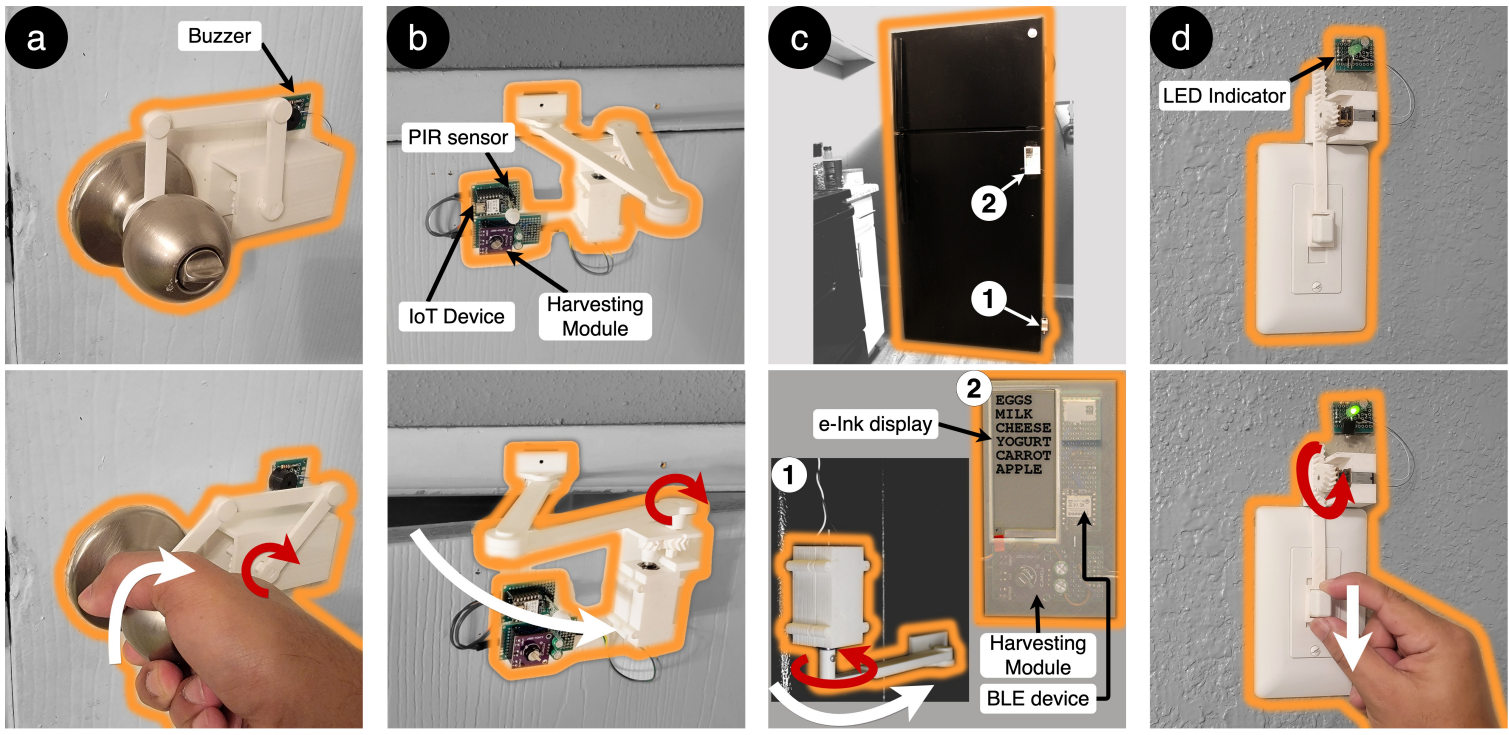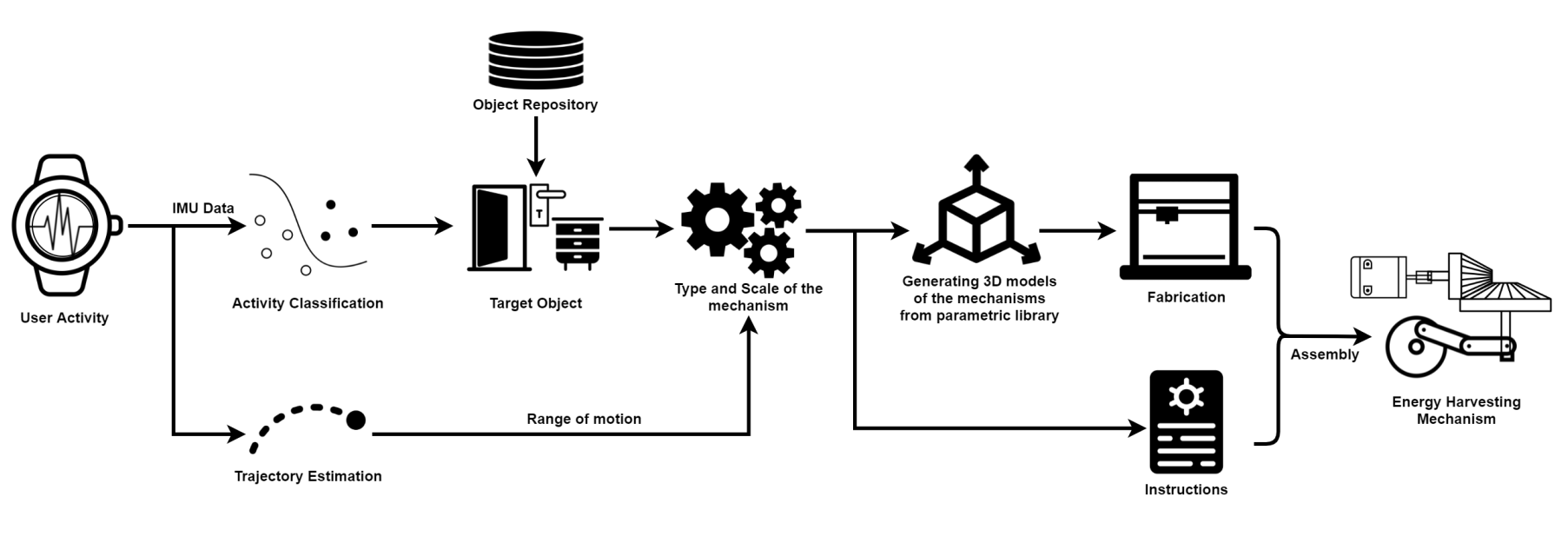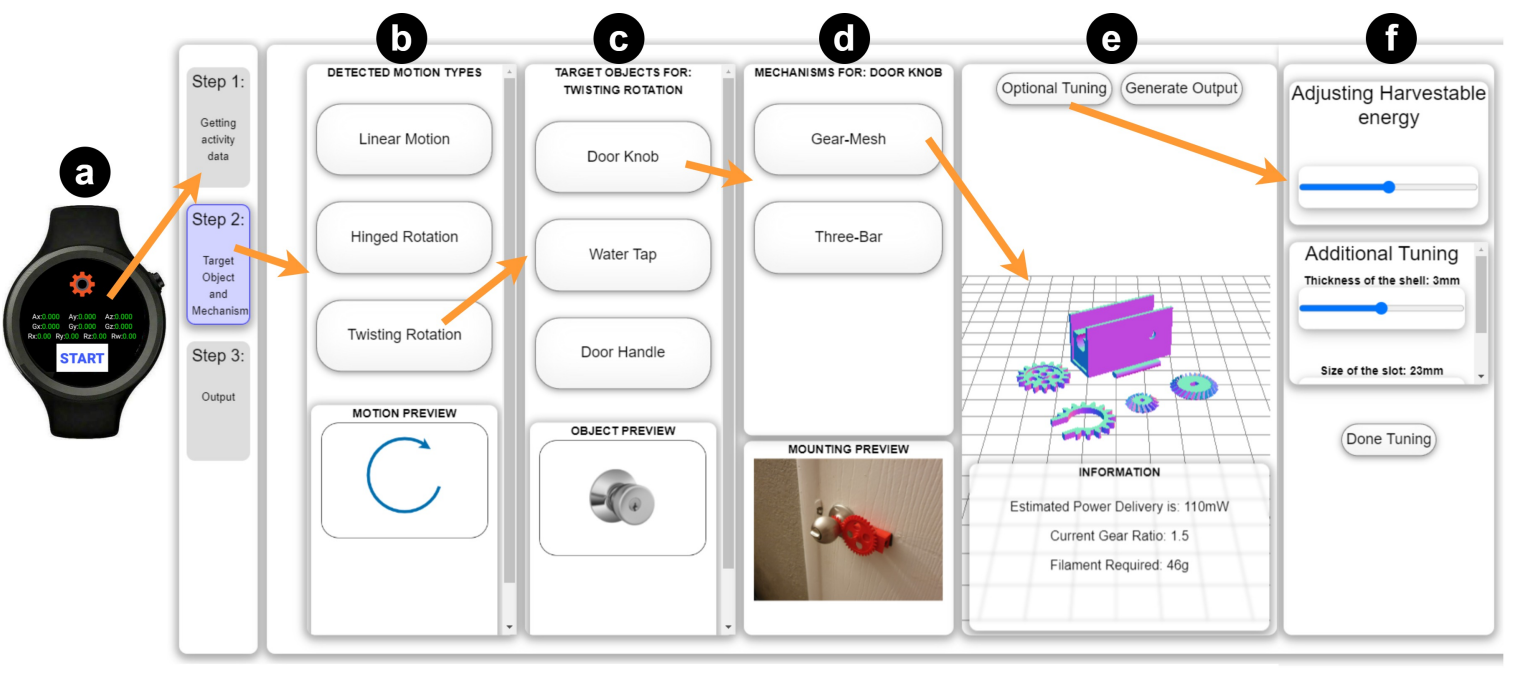3D Printed Energy Harvesters Could Make Your Home More Sustainable
Have you ever thought about how much energy we waste during a day? We open doors, turn off lights, and close cabinets—and for what? For it to turn into motion and leave forever? Seems inefficient. But, what if it didn’t have to be that way? Could we harness that energy and use it to power our homes, schools, and businesses? Well, a team of engineers from Texas A&M and UCLA wanted to do just that, and they recently published a paper describing their solution. It’s a new app that helps people with little to no tech experience design and build 3D printed kinetic machines so they too can capture the ambient energy from their homes and power small sensors and devices.
 Four examples of 3D printed kinetic energy harvesters. a) a door knob that powers an alarm. b) a door that powers a motion sensor. c) a refrigerator that powers a smart inventory display. d) a light switch that powers an LED to see the light switch at night. (Source: E3D published article.)
Four examples of 3D printed kinetic energy harvesters. a) a door knob that powers an alarm. b) a door that powers a motion sensor. c) a refrigerator that powers a smart inventory display. d) a light switch that powers an LED to see the light switch at night. (Source: E3D published article.)Now, trying to harness kinetic energy from personal environments is nothing new. The idea has been around since at least the invention of the waterwheel. More recent examples have included photovoltaic cells that capture indoor light to make electricity and HVAC systems that power indoor wireless sensors using the airflow inside the ducts. However, both examples above and other attempts have required an in-depth knowledge of engineering and each machine was specialized to the installation location.
The Texas A&M and UCLA team wanted to simplify the process and create kinetic energy harvesting machines that were accessible to the masses, versatile in their application, and adaptive in their utilization. What they came up with was an open source app they call E3D, a tool kit to help create kinetic energy harvesting machines that can be used anywhere and by anyone.
The process is simple and starts with a person wearing their smart watch. Said person goes about their day and does everything they normally would. All of their movements are captured and when the day is done, the data is sent to E3D. Next, the information is parsed via machine learning before the app recommends which activities return high energy. From there, the app will helps users design a kinetic energy machine that fits perfectly to their door, cabinet, or light switch, even going so far as to providing a printable 3D model. The last step is to print the model and install it using the instructions provided through the app.
 An overview of E3D’s workflow. (Source: E3D published article.)
An overview of E3D’s workflow. (Source: E3D published article.) Screenshot from the E3D app that takes the user through the entire process of data acquisition to model assembly. (Source: E3D published article.)
Screenshot from the E3D app that takes the user through the entire process of data acquisition to model assembly. (Source: E3D published article.)Sounds great in theory, but the researchers also wanted to know how the “average” person would handle the process in real life. So, they brought in 10 participants with varying levels of experience to test how easy E3D actually was. Each participant using the app successfully made their personal 3D printed kinetic energy harvesting devices and powered small sensors with it. The participants said they came away thinking more about sustainability and how they could implement these devices into their own lives.
The team would love to explore various improvements in the future like making the machines more durable, and possibly adapting the app to capture energy from body movements as well.
This research is still new, but the idea of making more sustainable houses with the help of 3D printing sounds great. I am already thinking of ways restaurants could incorporate E3D into their swinging doors to power lights, or installing one of these devices on a bathroom tap to monitor who actually washes their hands before they leave. This research could explore a variety of paths, but there’s no doubt in my mind that, as the need to be more sustainable increases, so will the sophistications of these machines. I am excited to see the next generation of these devices.
Subscribe to Our Email Newsletter
Stay up-to-date on all the latest news from the 3D printing industry and receive information and offers from third party vendors.
Print Services
You May Also Like
3D Printing Financials: Prodways Ends 2024 with a Profit
After a tough couple of years, Prodways (EPA: PWG) is starting to bounce back. The French 3D printing company finally made a profit in 2024, improved its operating performance, and...
Blue Origin & Auburn University Use EOS M290 to Study Copper 3D Printing
Blue Origin, the commercial space company built off of investments from Amazon founder Jeff Bezos, has donated two EOS M290 powder bed fusion (PBF) printers to Auburn University’s National Center...
Rocket Lab to Acquire Restructured Laser Communications Provider Mynaric AG
Rocket Lab USA, the Long Beach-based, end-to-end space services company that specializes in producing rockets with additive manufacturing (AM), has announced plans to acquire Mynaric AG, a German provider laser...
3D Printing Financials: Stratasys Ends 2024 with Cost Cuts and Growth Plans
Stratasys (Nasdaq: SSYS) has wrapped up 2024 with stronger margins but a full-year net loss. The polymer 3D printing leader navigated a year of economic headwinds, restructuring efforts, and shifting...



























